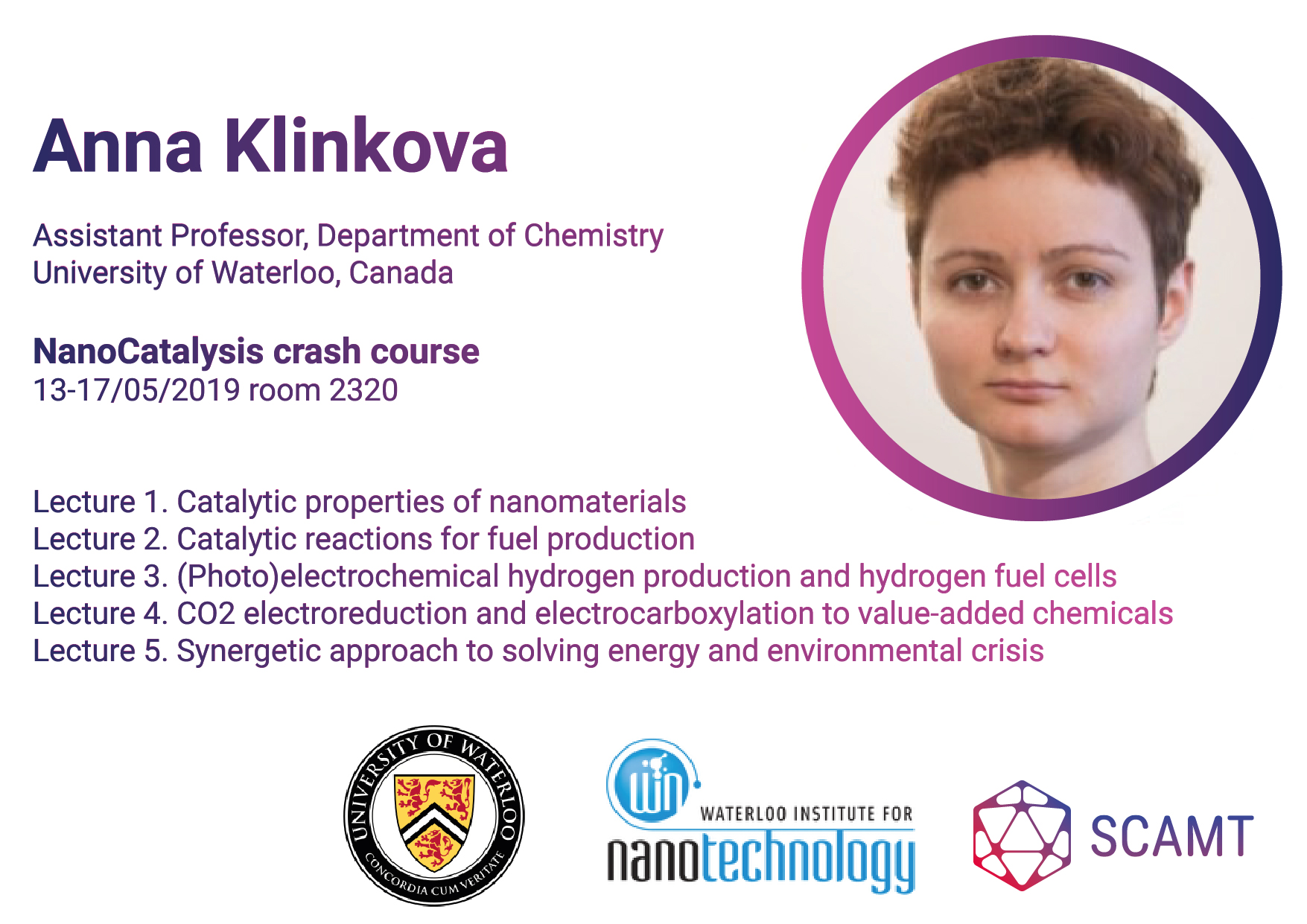С 13 по 17 мая 2019 SCAMT прочитает курс лекций лектор Анна Клинкова из Университета Ватерлоо, Канада.
Исследования Анны Клинковой направлены на разработку эффективных синтетических подходов к современным наноматериалам для применения в альтернативной энергетике и катализе. Ее цель - получить систематическое представление о влиянии формы наночастиц и химии поверхности на их физико-химические свойства, относящиеся к превращению диоксида углерода в топливо и химическое сырье, каталитическому производству водорода, энантиоселективному катализу и сбору света в солнечных элементах.
Курс лекций «NanoCatalysis for Energy: crash course» будет состоять из 5 лекций, каждая лекция длительностью 1час 30 минут
Лекции открыты для посещения, необходима предварительная регистрация https://forms.gle/kdjBdSBfBy6ZJrmt8
Язык лекций: Английский
Описание курса:
As the global population and economic activity grow, so does worldwide energy demand. Compounding this challenge is the growing need to protect our environment by increasing energy efficiency and developing green energy sources. This course will focus on the nanotechnology and nanomaterial prospective for these global challenges. We will explore how nanoscience enables the development of transformative catalytic technologies for energy applications and overview a synergetic solution for sustainable energy future from the perspective of (photo)electrochemical hydroge
Резюме курса:
Upon completion of the course, students will be able to:
o Understand the basic physical and chemical concepts behind energy-related catalytic conversion processes, including Fischer-Tropsch synthesis, CO2 hydrogenation, electrolyzers, and fuel cells;
o Describe the structure-property relationships in nanomaterials used in energy applications;
o Critically analyze literature examples of nanomaterials being developed for these energy-related technologies from a big picture perspective;
o Be comfortable with nanomaterials literature search and analysis for further self-guided learning/research.
Информационные ресурсы по курсу:
Course Notes Interactive course notes with practice questions will be available online via Top Hat.
Reference books (recommended for reference reading, but not required)
Nanotechnology in Electrocatalysis for Energy by Alessandro Lavacchi, Hamish Miller & Francesco Vizza; Nanotechnology in Catalysis, Volumes 2 and 3, Marcel Van de Voorde; Morphological, Compositional, and Shape Control of Materials for Catalysis, Paolo Fornasiero, Matteo Cargnello
Лекции:
Lecture 1. Catalytic properties of nanomaterials
Lecture 2. Catalytic reactions for fuel production
Lecture 3. (Photo)electrochemical hydrogen production and hydrogen fuel cells
Lecture 4. CO2 electroreduction and electrocarboxylation to value-added chemicals
Lecture 5. Synergetic approach to solving energy and environmental crisis
